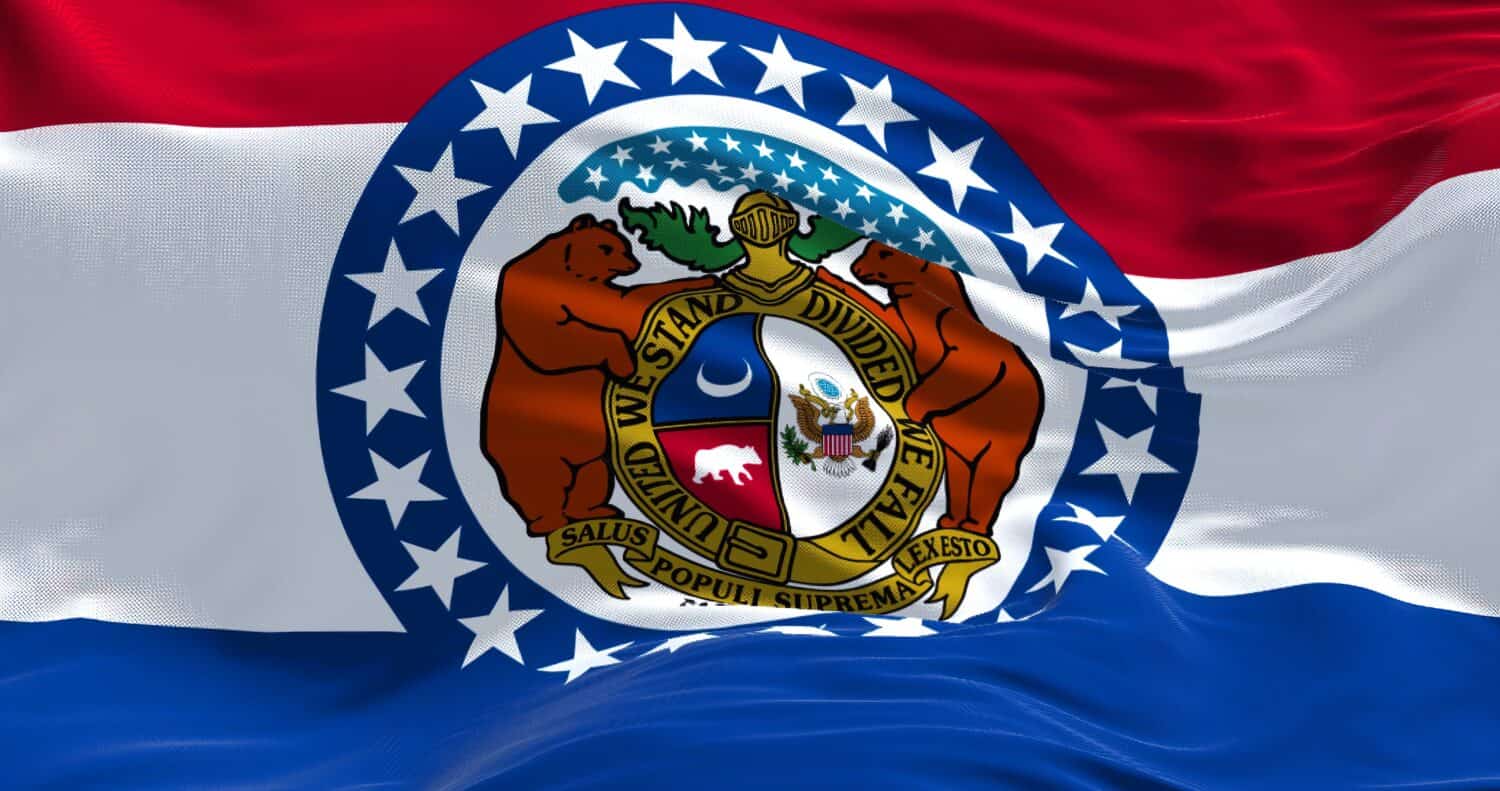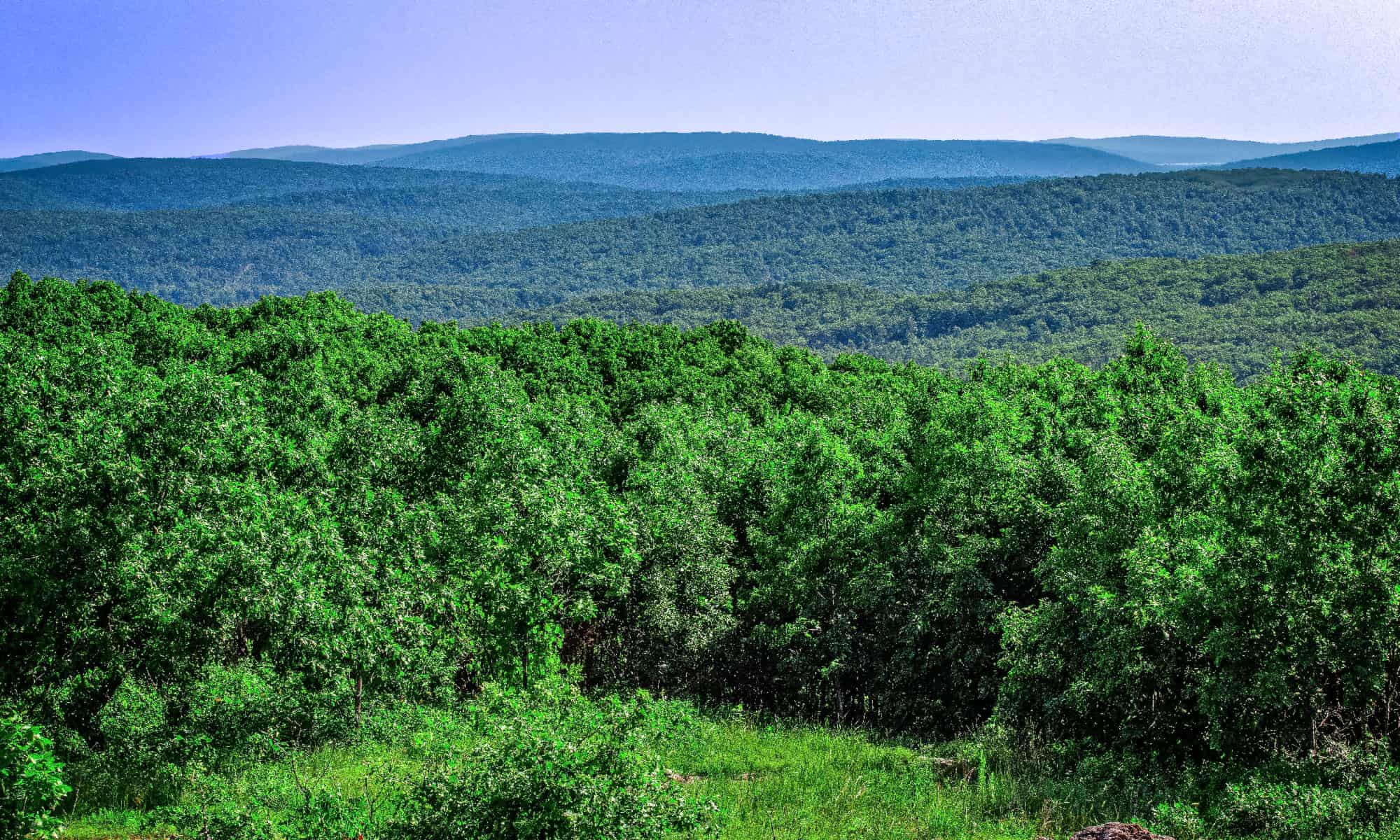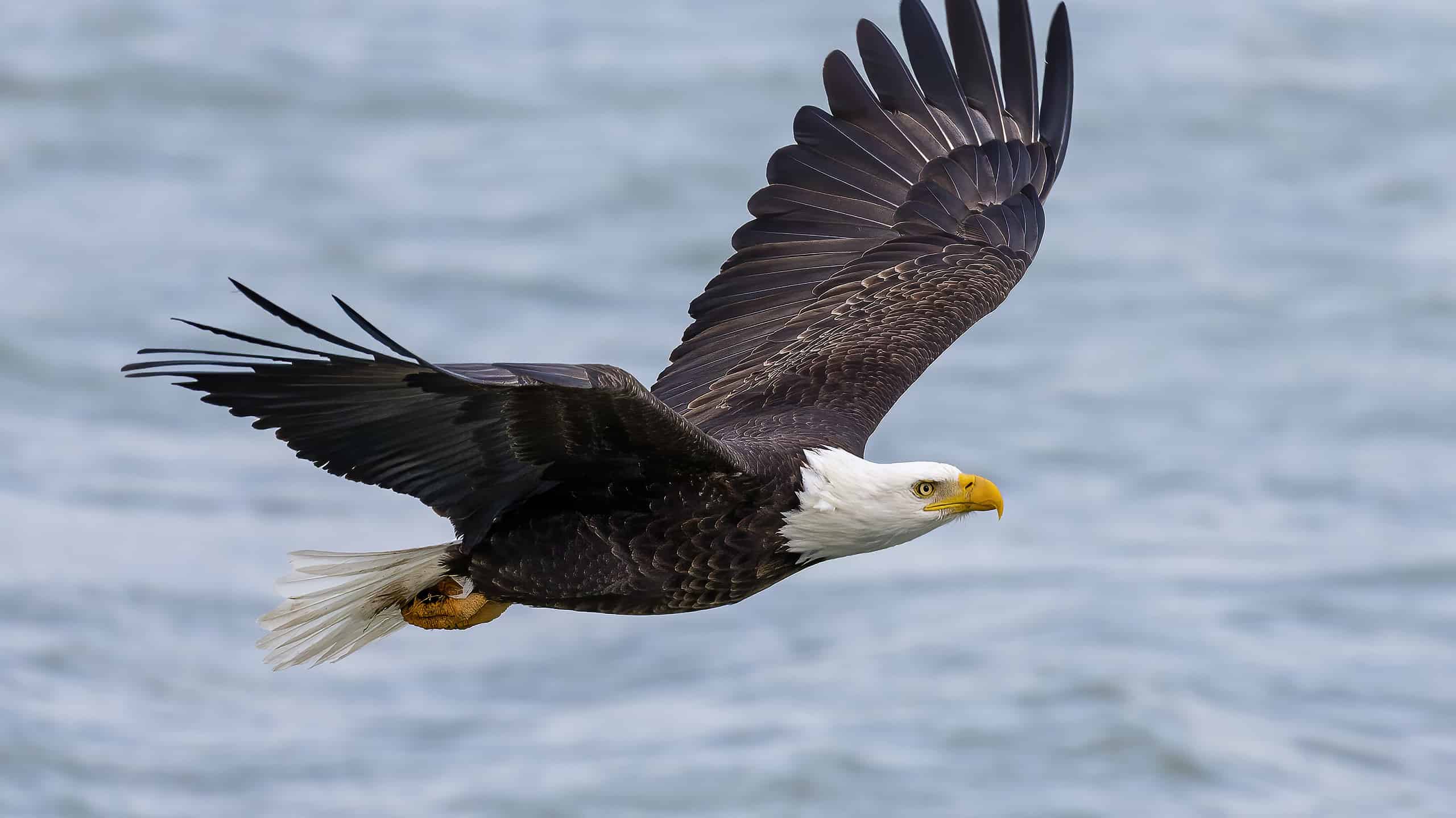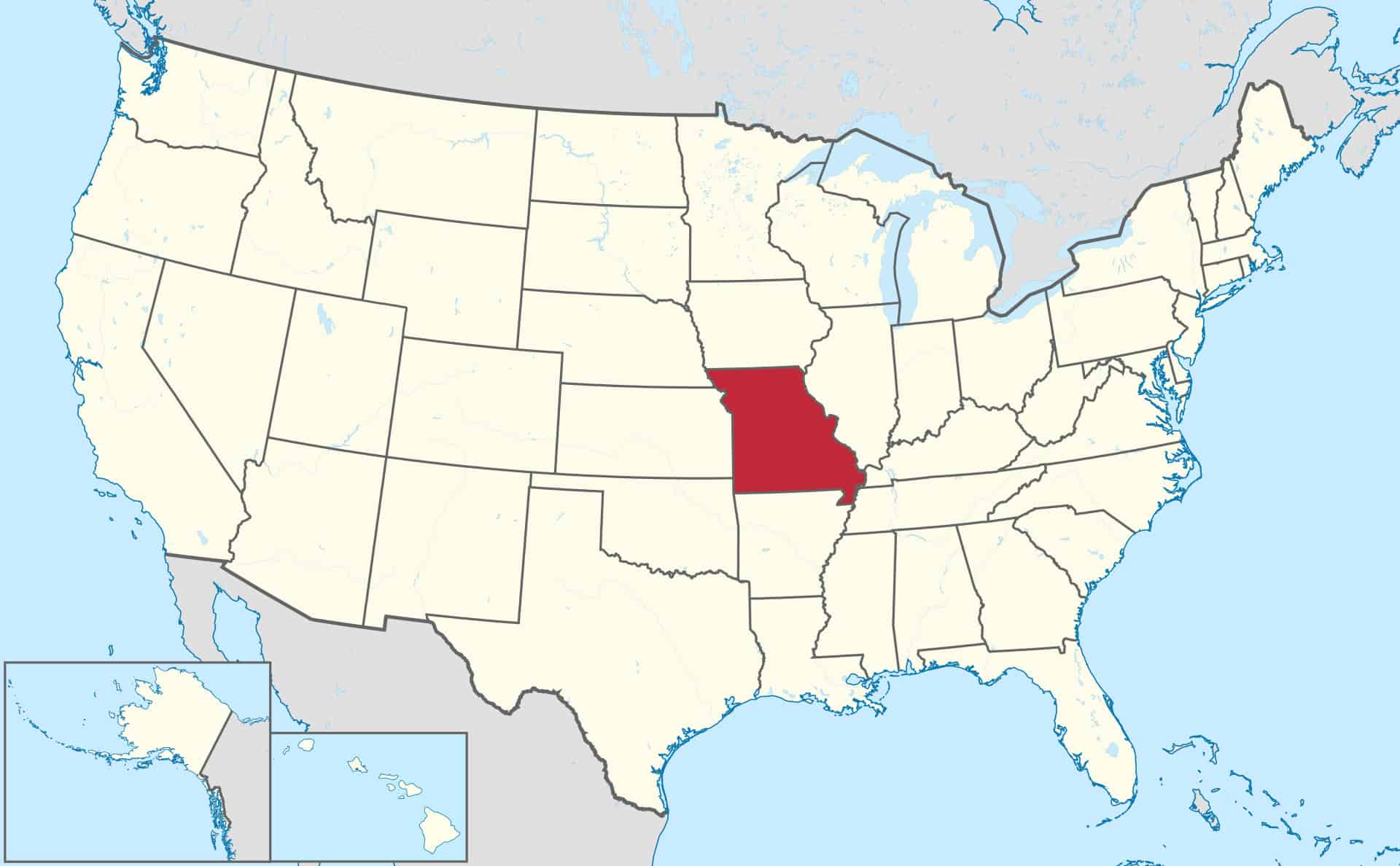On a map of the United States, Missouri stands out as the state in the very center of the country. The Show Me State is taller than it is wide but overall boasts a healthy total area and population. Find out just how tall Missouri is and learn more about its unique geography.
How Tall Is Missouri?
The state of Missouri is about 300 miles in length from north to south, according to Netstate. This is in contrast to its 240-mile width. The state of Missouri covers 69,707 square miles in total land area.
The northernmost portion of the state lies on the Des Moines River, immediately north of the Battle of Athens State Historic Site in Clark County. The southernmost portion of the state lies within Missouri’s bootheel, within the municipality of Hornersville.
So how does Missouri compare to other states? In terms of total area, Missouri is the 21st largest state. It has about the same length from north to south as the state of Georgia.
The table below compares Missouri to the largest and smallest states in the country in terms of land area, as well as states with a similar height. The data is from the United States Census Bureau and Netstate.
| State | Width (East to West) | Length (North to South) | Overall Size | Total Population (2020 Census) |
|---|---|---|---|---|
| Rhode Island | 37 miles | 48 miles | 1,545 square miles | 1,097,379 |
| Oregon | 395 miles | 295 miles | 98,379 square miles | 4,237,256 |
| Missouri | 240 miles | 300 miles | 69,707 square miles | 6,154,913 |
| Georgia | 230 miles | 300 miles | 59,425 square miles | 10,711,908 |
| Alabama | 150 miles | 330 miles | 52,420 square miles | 5,024,279 |
| Alaska | 2,4000 miles | 1,420 miles | 665,384 square miles | 733,391 |
Statehood
Missouri was a part of the 828,000 square miles of land acquired by the United States in the Louisiana Purchase for $15 million. Eventually, the Territory of Louisiana was renamed the Territory of Missouri, according to the Missouri Secretary of State (.gov).
Missouri joined the Union as the United States’ 24th state in 1821, but before this could happen a debate ensued over the government’s right to restrict slavery, writes the History Channel.
The agreed-upon Missouri Compromise admitted Maine to the Union as a free state, while Missouri had no restrictions on slavery. By 1857 the Supreme Court ruled the Missouri Compromise unconstitutional. In the Civil War, Missouri was a border state that sent thousands of men to fight both for the Union and the Confederacy.

Missouri became the 24th state admitted to the Union in 1821.
©rarrarorro/Shutterstock.com
Geography of Missouri
Missouri has a diverse geography that can be divided into four to five geographical regions, according to the University of Missouri-St. Louis.
Land north of the Missouri River is known as the Dissected Till Plains. It is the only part of the state that ever contained glaciers. Today these plains have rich fertile soil and a number of slow-moving rivers and streams.
The Alluvial River Plain is sometimes recognized as the land along the Missouri and Mississippi Rivers. The area contains rich soil, making it a sought-after region. Missouri’s largest cities — Kansas City and St. Louis — lie within the Alluvial River Plain.
The Osage Plains cover west-central Missouri. The land is mostly flat with some hills. Though the soil is not as rich, corn and other crops grow in this region.
The Interior Highlands or Ozark Plateau, cover the largest land area in Missouri. This region contains the Springfield Plateau, Salem Plateau, and St. Francois Mountains. The Interior Highland landscape is beautiful and diverse, with numerous caves, low mountains, and large natural springs, lakes, and rivers.
Finally, the southernmost part of Missouri is known as the Mississippi Lowlands or Mississippi Alluvial Plain. This region encompasses the state’s “bootheel.” Though the land was once swampy, it has since been drained to create rich and fertile farmland for a number of crops.

Missouri’s Ozark Plateau contains the St. Francois Mountains, which also hold the highest point in the state, Taum Sauk Mountain.
©Steven Schremp/Shutterstock.com
Highest and Lowest Points in Missouri
The highest point in Missouri lies within the Ozark Plateau region of the state. It is Taum Sauk Mountain in the Saint Francois Mountains, which has an elevation of 1,772 feet. The lowest point in Missouri lies at the St. Francis River in Dunklin County. It is 230 feet above sea level.
Overall Size
With a total area of 69,707 square miles, Missouri is the 21st largest state in terms of land area. It’s easy to forget just how large the United States is compared to many other countries. For example, Missouri itself is 2.5 times bigger than the country of Ireland.
The longest highway in Missouri is known simply as Route 5. It is the only highway to cross the entire state of Missouri, from Putnam County in the north to Ozark County in the south.
Missouri has a population of 6,154,913 people, making it the 19th most populous state in the country. Its most populated cities are Kansas City, St. Louis, and Springfield.
Wildlife in Missouri
With its diverse landscapes and geographical regions, Missouri is home to a fascinating amount of wildlife. The Show Me State’s numerous lakes and rivers make it an ideal spot for fishing and its state parks offer ample opportunity for wildlife watching.
Fish
Missouri contains over 200 species of fish, according to the Missouri Department of Conservation. Some of the state’s major bodies of water include the Mississippi and Missouri Rivers, as well as Table Rock Lake and the Lake of the Ozarks to name a few.
Each body of water in Missouri is home to its own population and variety of fish. For example, darters prefer the clear Ozark streams while sicklefin chub only live in the Missouri and lower Mississippi rivers. Missouri is also home to some endangered species of fish, such as the lake sturgeon.
Birds
Nearly 400 species of birds have been found in Missouri. Birds are present throughout the state, from its warmest climates in the south to its counties above the Southern Limit of Glaciation.
Some of the most common species of birds in Missouri include the northern cardinal, blue jay, American crow, and house finch. The state is also home to birds of prey such as red-tailed hawks and bald eagles.

A number of birds of prey make their home in Missouri, including bald eagles.
©iStock.com/Karel Bock
Reptiles and Amphibians
Missouri’s reptiles and amphibians include a number of species, such as salamanders, lizards, turtles, frogs, and snakes. The only venomous snakes in Missouri are the copperhead, cottonmouth, western pygmy rattlesnake, massasauga rattlesnake, and timber rattlesnake.
Alligators are not native to Missouri. However, some have been spotted in the southern portion of the state, where it’s warm enough for them to survive in the summer months. The Missouri Department of Conservation notes that when gators appear in Missouri it’s usually the result of the animal escaping captivity or being released.
Mammals
Missouri has nearly 70 species of wild mammals, including a very healthy deer population. In fact, the state contains an estimated 1.4 million white-tailed deer. Other mammals commonly found in Missouri include rabbits, squirrels, raccoons, and skunks.
The American black bear is the only species of bear found in the state. Missouri is also home to one animal in the marsupial group — the opossum.
Thank you for reading! Have some feedback for us? Contact the AZ Animals editorial team.








